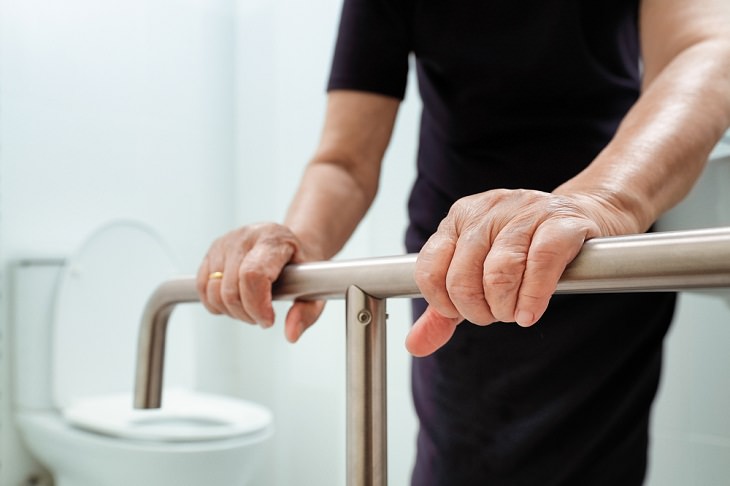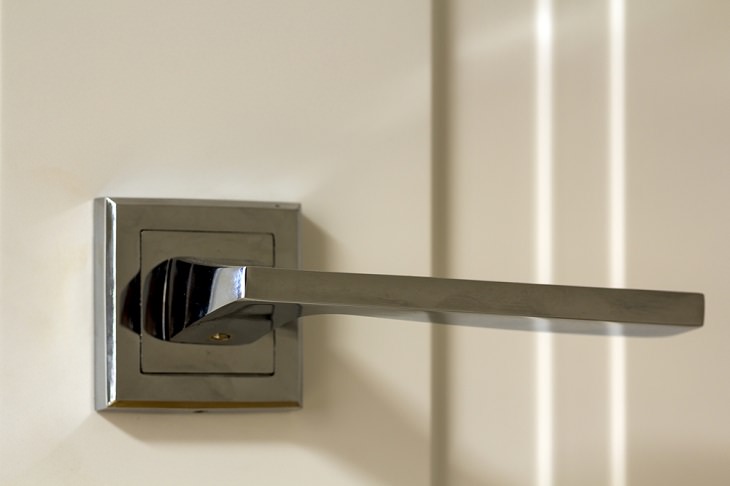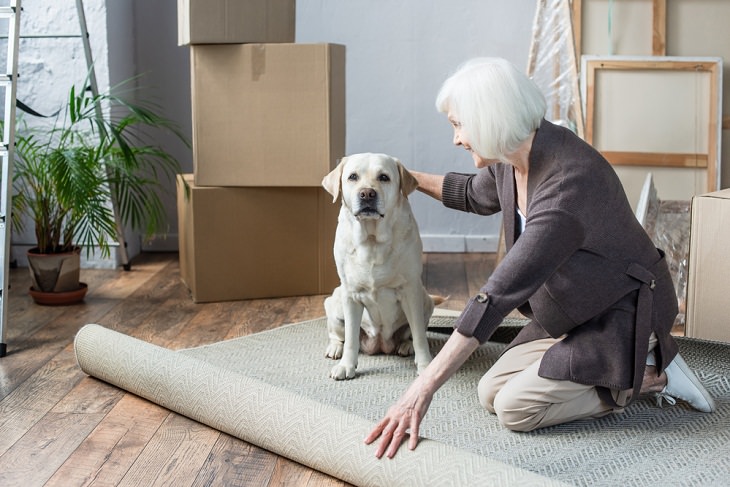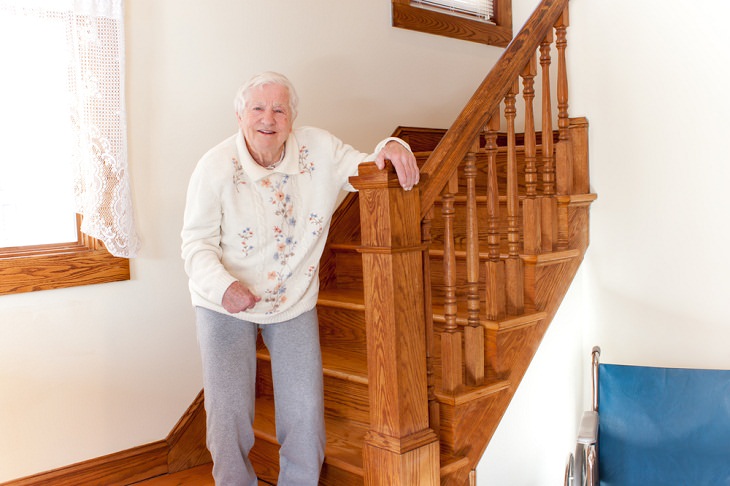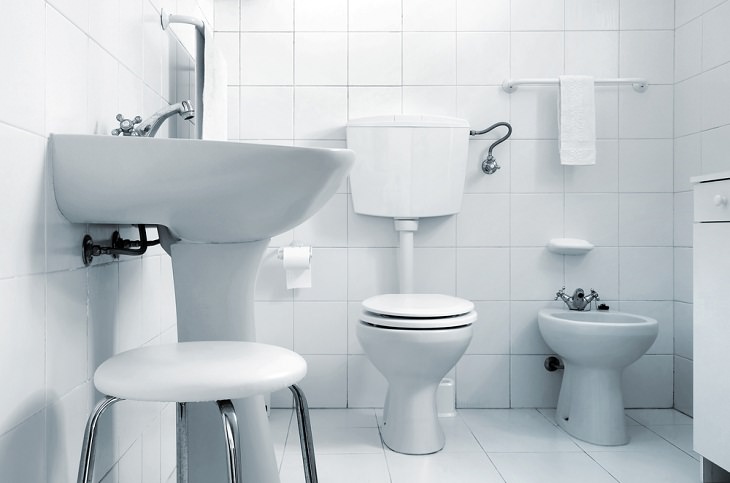According to the National Council on Aging, an older adult is treated in the emergency room for a fall every 11 seconds. One of the ways to reduce this risk is by adding grab bars in different parts of your house. The bathroom, especially, will need one as the floor there is almost always moist and older adults will always be at risk of slipping and falling.
However, simply adding these handles everywhere in your house won’t make sense; you should be strategic about it. For instance, an overlooked spot in the house that should have a grab handle is the front door. If a senior is entering the house with a few packages in their hands, they would need something to hold onto for balance other than the door handle. This is where a grab bar would be really handy.
2. Use lever doorknobs instead of a round doorknob
Round doorknobs have become common these days in every home. However, they aren’t ideal for seniors. The Centers for Disease Control and Prevention reports that nearly 50% of people 65 years or older have arthritis. Joint issues like these can make it harder to grip a round doorknob. Furthermore, if a senior has some form of muscle weakness, rotating their arms to move the doorknob can also be strenuous.
One easy-to-use suggestion is to replace round doorknobs with a lever-style handle. They are quite inexpensive, and a person won’t need to grip the handle; they can simply apply pressure to open the door. Moreover, such handles also make it easier for seniors in a wheelchair to open the door.
Another option is using doorknob grips. They are low-cost devices that easily fit over an existing doorknob and enable you to comfortably open doorways with a single finger.
3. Better carpeting
As we have already mentioned, falls are the most common form of injury for seniors, and more than half of those falls happen inside the home. This is because floors can be slippery and hence a living space must have an even, non-slip floor. One helpful solution is to secure any hardwood, laminate, or tile flooring with a quality hard wearing carpet. As their name suggests, these carpets are hard wearing and can help cushion a fall much better than any hard surface.
If you have hardwood flooring, try going for anchored carpets, as they have a softer surface and will provide older adults more traction around the house. Make sure, however, that you get rid of high-pile carpets with long, tall fibers as they are considered a tripping hazard. Ideally, a firm carpet with a short pile is a safer option as it will provide a firm basis for walking. Low pile carpets feature tight loops of fabric and shorter fibers that are convenient to clean and are easier for people who are less stable on their feet. Also, ensure that the carpets don’t have any loose ends, as that’s a potential tripping hazard, too.
4. Secure the stairs
Stairs can be dangerous for the elderly and are an extremely common place for falls to happen. Thus, it is important to secure the stairs in the house to make the place safer for seniors.
You can start by installing two sets of railings for every set of stairs in your home. This will give you some extra grip as you are climbing up or going down the stairs. You can also apply non-slip adhesive strips to the stairs, which are fairly affordable and can be found in any retail store.
If you have the budget for it, try and install stair lifts or ramps to make it easier for the older adults to access the house.
Ideally, though, the bedroom should be at the ground level of the house for senior adults. If every room they need is located on the first floor, they won’t have to use the stators regularly. We must remember that climbing stairs can be a rather difficult task when you are older.
5. Include a shower bench
For the elderly, a safe place to sit in the shower is oftentimes quite vital. It eases the strain on their body and also decreases the amount of time they have to stand in the shower. To help them with this, a shower bench will be pretty handy. It will reduce their chances of slipping and falling and will also give them some time to rest if they get tired inside. Install a bench is quite easy, just make sure that it’s large enough for the senior to sit comfortably and bathe on.
If there’s limited space in the bathroom, you can install a bench seat that can flip up when not in use, too.
6. Pull-out drawers for the kitchen
While pull-out drawers aren’t specifically designed for older adults, they can be quite helpful. These drawers have an additional sliding mechanism that allows them to be pulled out or forward whenever necessary, offering better access at the back portion and the corners.
Installing these drawers in the kitchen will provide the elderly with an easier reach to dishes, tools, and cookware. More importantly, pull-out drawers will also ensure that they don’t have to bend over or strain themselves to take out some item from the back of the cabinet.
Share this post with those who might find it useful...

